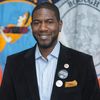Stop, question and frisk is an acceptable policing tool, as the Supreme Court held in Terry v. Ohio, 392 U.S. 1 (1968). That is not the question at hand, despite how many have attempted to frame the debate in that way. Indeed, the question is whether the NYPD's current usage of stop, question and frisk, which disparately targets communities of more color, the LGBT community, the homeless and other historically disenfranchised New Yorkers, is effective, legal and/or necessary. My view is that it meets none of these standards and therefore should face reform.
The current stop, question and frisk policy is not effective. Statistics released this month by the NYPD show that 684,330 stops were performed in 2011, which represents a 603% increase since 2002, the year that data collection began on this program. This makes for over 4.3 million times that a New Yorker has been stopped, questioned and frisked during the Bloomberg administration.
This could be considered reasonable if it were the result of a high level of criminal activity, but the numbers do not bear that out to be true. An astounding 88% of those stops were of completely innocent New Yorkers in 2011 and the same holds true over the entirety of the last decade; indeed, almost 3.8 million stops have resulted in no arrest or summons.
Again, one could say that this is excusable if it were stemming violence in communities like mine. Unfortunately, the facts fail to even show that. Weapons have only been found from a stop, question and frisk 1.03% of the time, and firearms only 0.15% of the time. Meanwhile, data reveals a lack of causative effect between the number of stop, question and frisks and the number of homicides. For instance, the 75th Precinct, believed to have the highest incidence of gun violence in the city, saw a 37% drop in stop, question and frisks from 2010 to 2011, yet homicides also fell 6%.
Trust me, no one is more committed to reducing violence in our communities than we are. Since becoming a Council Member, I have attended far too many funerals and consoled far too many mothers. This crisis drove the Council's push to establish the Task Force to Combat Gun Violence, and as co-chair, along with Council Member Fernando Cabrera of the Bronx, I am pursuing more efficient ways to get guns off our streets, such as gun buyback programs; the NYPD recovered 85 weapons from a single event I co-sponsored in November.
The current stop, question and frisk policy is not legal. According to Terry v. Ohio, an NYPD officer must have reasonable suspicion that a person has been, is or is about to be engaged in criminal activity to perform a stop, question and frisk. Reasonable suspicion is based on specific and articulable facts, rather than an indefinite hunch. Terry set this high standard because the Supreme Court recognized that stop, question and frisk is a "serious intrusion upon the sanctity of the person, which...is not to be undertaken lightly."
Indeed, since that ruling, courts in New York State have been careful in balancing the needs of effective law enforcement and the privacy rights of regular citizens. A number of cases have defined types of criteria which, when viewed on their own, fail the reasonable suspicion standard, including nervous reactions, location in a high-crime area, general descriptions of suspects (i.e. black male wearing a baseball cap) and visible bulges inside a person's pocket.
The point here is that NYPD officers should be weighing all information available, yet the evidence points to that not being the case. According to a report released by the Center for Constitutional Rights in connection to Floyd, et al. v. City of New York, et al., a federal class action lawsuit challenging the NYPD's stop, question and frisk policy, nearly 150,000 stops over the last six years lack any legal justification, and all together 30% of all stops have been unconstitutional.
The NYPD's cavalier attitude towards the law has been most greatly felt in communities of more color, which are overwhelmingly the target of the stop, question and frisk policy. In 2011, about 87% of those stopped were black or Latino. Many will challenge that this is due to the realities of where crime occurs, but even in low crime areas and mixed or mostly white neighborhoods it is blacks and Latinos that are more likely to be stopped.
The current stop, question and frisk policy is not necessary. The most important tool in an NYPD officer's crime-fighting kit is a great relationship with the community. That is how trust is established and that is how we get safer streets for all. Unfortunately, when pressured by precinct quotas for producing UF-250, the focus shifts. Community members feel targeted and shamed while many NYPD officers, on and off the record, have reported they feel pressured and demoralized. All the while, crime ticks upward and everyone suffers. As a result, the policy not only fails to serve its purpose, it actually undermines the overarching goals of the NYPD, which has transformed stop, question and frisk from a useful tool into an utter tragedy.
NYPD's Stop and Frisk Practice Needs Reform
Stop and frisk is an acceptable policing tool. That is not the question at hand. The question is whether the NYPD's current usage of stop and frisk is effective, legal and/or necessary.
This post was published on the now-closed HuffPost Contributor platform. Contributors control their own work and posted freely to our site. If you need to flag this entry as abusive, send us an email.
